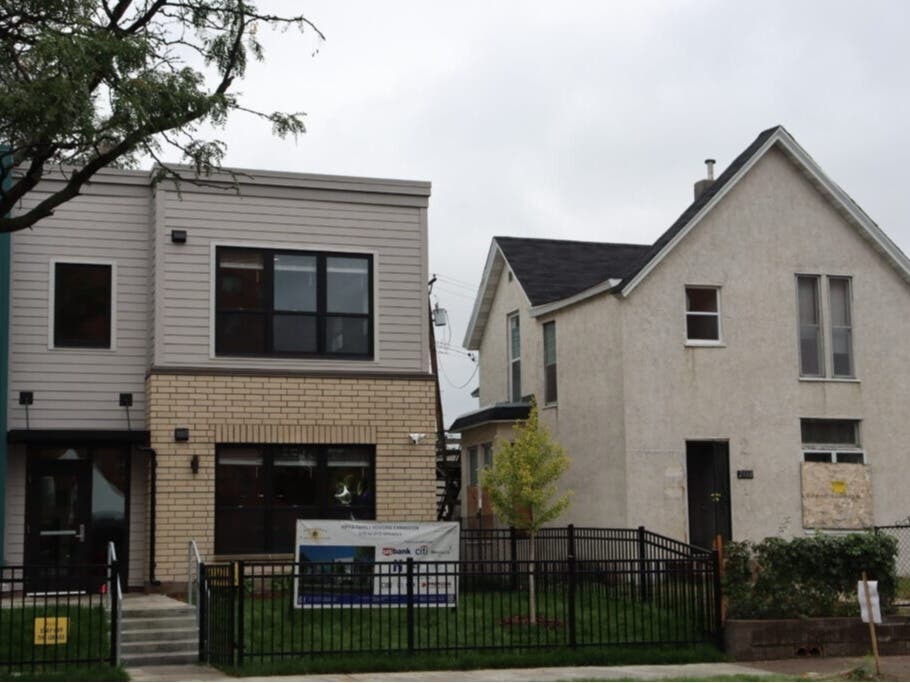Politics & Government
Lawmakers Want To Increase Density Across Minnesota To Boost Housing Affordability
Minnesota has a housing shortage, and lawmakers plan to fix it by allowing more housing units.

February 20, 2024
Minnesota has a housing shortage, and lawmakers plan to fix it by allowing more housing units — including duplexes, fourplexes and mother-in-law suites — in more parts of the state.
Find out what's happening in Minneapoliswith free, real-time updates from Patch.
A bill (HF4009/SF3964) spearheaded by Democrats and supported by some Republicans would override local rules mandating large minimum lot sizes, single family homes and certain costly building materials like stone simply for aesthetics. The plan to allow more “missing middle” housing would lower housing construction costs but is drawing opposition from cities, as it would take away certain zoning controls from local governments.
The House Housing Finance and Policy Committee will hear the bill, chief authored by Rep. Larry Kraft, DFL-St. Louis Park, on Tuesday afternoon. The draft legislation will be a starting point for negotiations and is likely to change throughout the legislative session.
Find out what's happening in Minneapoliswith free, real-time updates from Patch.
Several DFL lawmakers and three Republicans — Rep. Jeff Dotseth of Kettle River, Rep. Jim Nash of Waconia and Sen. Rich Draheim of Madison Lake — co-authored the bill.
Under the draft legislation, cities would have to allow the development of at least six types of missing middle housing other than single-family detached homes on residential lots. Those buildings could include duplexes, triplexes, fourplexes, sixplexes, townhomes, courtyard apartments, small cottage homes and more.
The proposed legislation would bar cities from requiring architectural features, square footage, garage sizes, and minimum lot sizes greater than 2,500 square feet in a large city or 4,000 square feet in a medium or small city in most cases.
The legislation would limit cities’ ability to implement parking requirements. Cities could require a maximum of one parking spot per housing unit, except for homes located near designated commercial districts or public transit — in those areas, the city could not force developers to build parking alongside homes.
A separate proposal in the Senate would go even further, banning parking minimums statewide.
Daniel Lightfoot, a lobbyist for the League of Minnesota Cities, said local governments have many concerns with the bill. Cities take issue with the erosion of local zoning controls, the potential strain on municipal infrastructure and the lack of public input in new development.
The draft bill limits public hearings on new developments to situations when state or federal law requires a hearing; when the proposed development is in a historic district; or when the builder requests an exception to city ordinances.
Lightfoot said municipalities are also concerned about the public health and safety impact of increased density — for example, fire trucks’ ability to reach all of a property’s units in case of a fire.
The draft legislation allows cities to impose standards on buildings for public health, safety and general welfare. But the draft bill also forbids local governments from imposing standards stricter than those outlined in the bill — and that creates confusion for municipal governments, Lightfoot said.
Rep. Michael Howard, DFL-Richfield, who is chair of the House housing committee, said the bill language around public health, safety and city resources is an “ongoing conversation” between the bill’s advocates and local governments.
The committee will also discuss Wednesday an amendment that would allow for apartment construction on lots zoned for commercial use, as long as the building complies with other municipal standards. It would bar local governments from using building height limits or extraordinary setback requirements to block the construction of apartment buildings.
It would also require cities to allow the construction of affordable housing developments that are bigger and taller than normally allowed by city rules.
The draft legislation currently doesn’t limit homeowners’ associations ability to impose aesthetic requirements. But HOAs should not be able to impose aesthetic requirements that drive up the cost of homes, Howard said.
The bill embodies the principles of a nascent political movement called “YIMBism,” or, yes-in-my-backyard, which is a reaction against NIMBYism, or not-in-my-backyard regulations, which have long stifled development. The movement to make it easier to build housing has made allies of developers and conservatives who are against government regulation, and liberals who want more housing.
The Minnesota Reformer is an independent, nonprofit news organization dedicated to keeping Minnesotans informed and unearthing stories other outlets can’t or won’t tell..